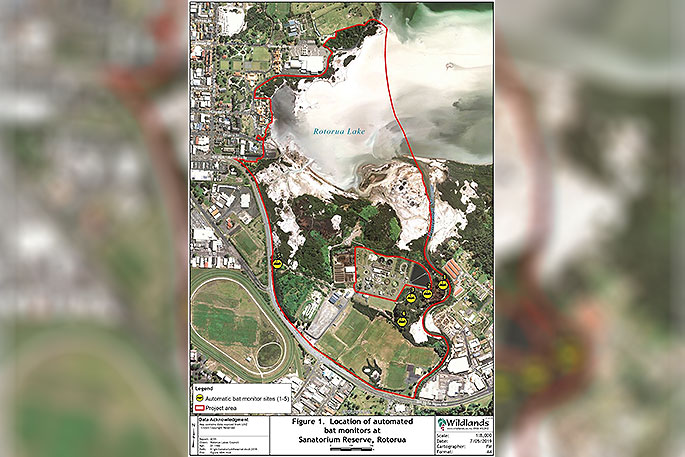The Sanatorium Reserve is being reinvigorated as part of the long term plan, but the discovery of native long-tailed bats using the reserve meant that plans needed to be reassessed to ensure future work accommodates their habitual needs and safety.
The Sanatorium Reserve is known for its rocky geothermal landscape, sulphurous smell and threatened species of avian life that reside at the lake's edge near Rotorua's CBD.
Native kunzea robusta otherwise known as geothermal kanuka, is a native tree that thrives in this harsh environment.
"The original plan for the ecological restoration of the space included clearing the grounds of exotic trees to allow the recovery of naturally occurring native plants, with less competition for water, food, sunlight and space," says a post on the Rotorua Lakes Council website.
"However, since their discovery on the reserve in July of this year, all maintenance on the site has had to be done with the safety of the threatened native bats at front of mind."
Bats are the only native land mammal to New Zealand, and long-tailed bats are a threatened species. They suffer from predation by cats, possums, rats and stoats.
 Location of automated bat monitors at Sanatorium Reserve.
Location of automated bat monitors at Sanatorium Reserve.
According to Wildland Consultants this is only the third time that a colony of long-tailed bats has been recorded in urban or peri-urban habitats within the nation.
"Wildland placed Automated Bat Monitoring units (ABMs) in 5 different areas on the reserve for 17 nights total. The ABMs recorded the movements of the bats by counting the sounds of their unique echolocation that they use to navigate, hunt and communicate.
"This confirmed that bats were active at all of the monitored sites on the perimeter of the reserve, where there were groupings of exotic trees such as Eucalyptus and Tasmanian Blackwood."
The ABMs showed the bats passing through the exotic forests on the reserve between 1 and 8 times per night, during recording.
The majority of Australian Eucalyptus and Tasmanian Blackwood in the reserve were marked to be felled, but it was found during the site assessment that the long-tailed bats seem to prefer these trees for their more established size for roosting and foraging.
Discussion is currently underway between Wildland, Department of Conservation and other partners on how to best preserve the bat's habitat moving forward with the Sanatorium Reserve revitalization.
Click here to find out more about the Sanatorium Reserve revitalization.



0 comments
Leave a Comment
You must be logged in to make a comment.